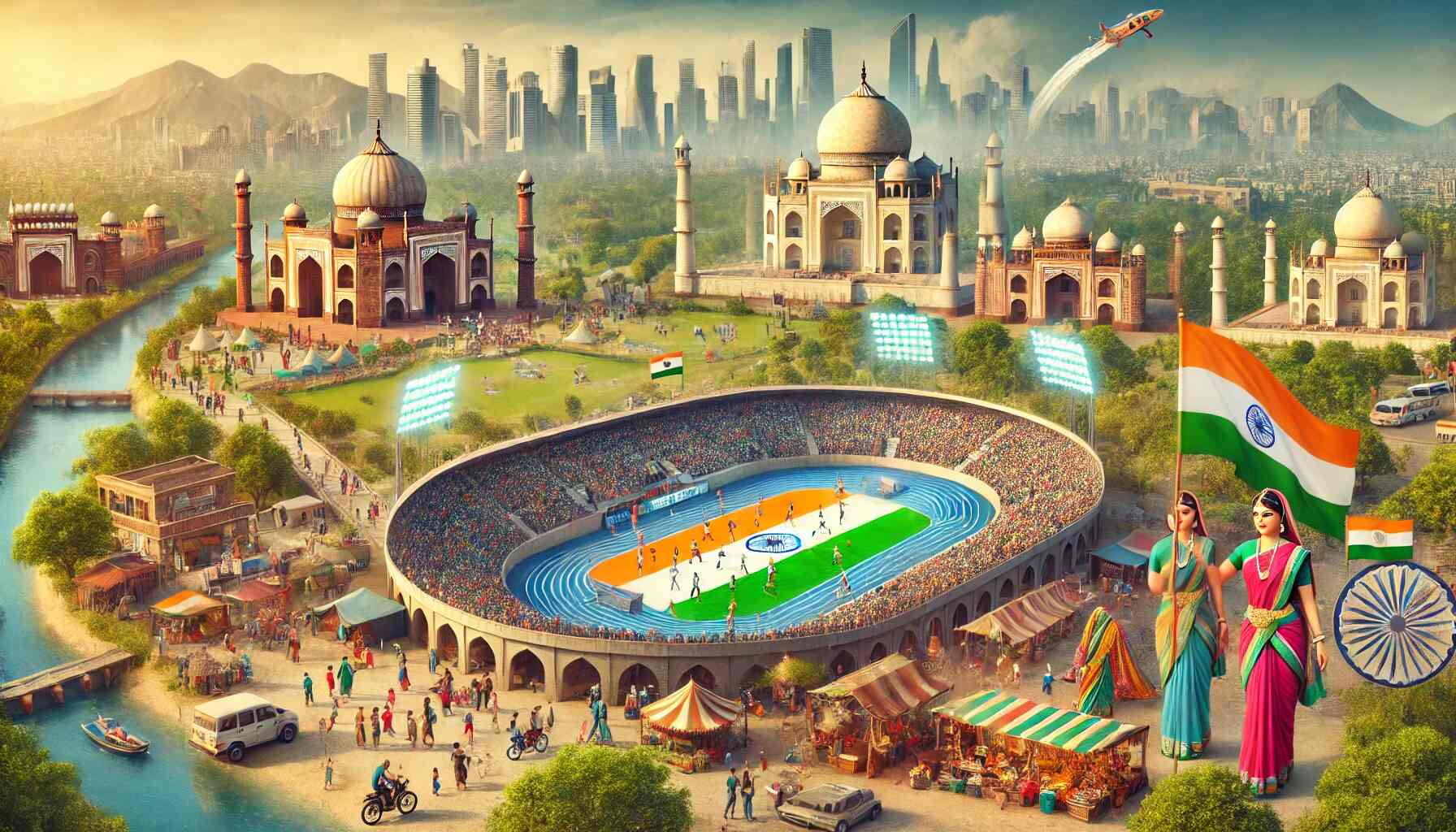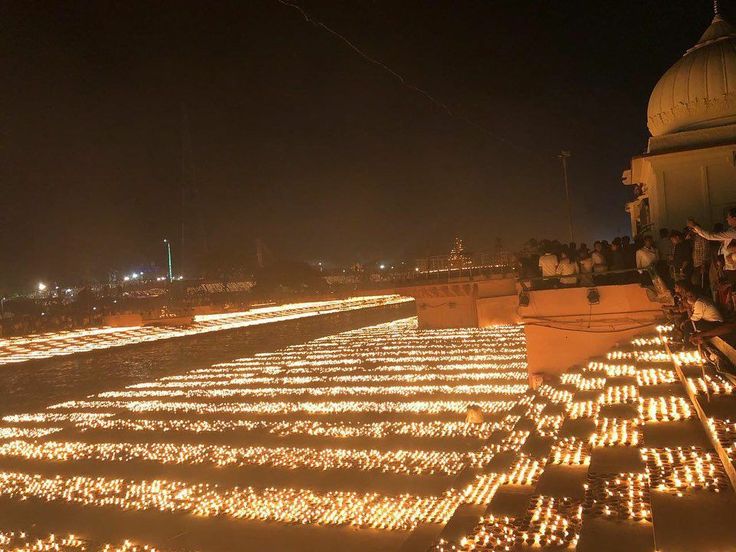Lucknow: When international traveler Julia Sørensen from Denmark stepped off the train in Varanasi, the sights, sounds, and spirituality overwhelmed her. “It’s unlike anything I’ve ever experienced,” she said, describing the riverfront Ganga Aarti. For millions like her, India isn’t just a destination—it’s a deep dive into culture, color, and connection. And for India, tourism is more than a showcase of its heritage—it’s a serious economic engine.
A Cultural Powerhouse
India’s history spans over 5,000 years, with 40+ UNESCO World Heritage Sites like the Taj Mahal, Ajanta-Ellora Caves, and Hampi drawing a steady stream of tourists. Add to that the vibrant appeal of festivals like Holi, Diwali, and Durga Puja, and you have a calendar filled with immersive experiences.
“Every monument has a story, and every festival has a soul. That’s what makes India so rich for a tourist,” explains Anuradha Singh, a heritage walk curator in Jaipur.
Economic Impact: Cultural tourism contributed to over 60% of domestic travel in 2023, bolstering hotels, guides, handicraft markets, and local eateries.
Nature’s Bounty, Adventure’s Playground
From the snow-dusted peaks of Ladakh to Goa’s golden beaches, India is a land of extremes. In 2023 alone, domestic spending on nature-based tourism crossed ₹1.5 lakh crore, powered by adventure seekers rafting in Rishikesh, trekkers in Himachal, and wildlife enthusiasts in Ranthambore and Jim Corbett.
“Eco-tourism is helping remote areas thrive,” says Sandeep Chauhan, a local operator in Spiti. “We host homestays, offer trekking guides, and cook local meals. It’s sustainable and impactful.”
World-Class Medical and Wellness Tourism
India’s blend of affordable, high-quality healthcare and ancient wellness traditions has turned it into a $9 billion medical tourism hub. Cities like Chennai, Mumbai, and Delhi offer complex surgeries, while Kerala and Rishikesh attract wellness seekers for Ayurveda and yoga.
“India cured my heart condition for a third of the price I’d pay in the U.S.,” says Jordan McAlister, an American medical tourist recovering in Bengaluru.
Pilgrimage with a Payoff
Religious sites such as Tirupati, Varanasi, Kedarnath, and the Char Dham Yatra magnetize spiritual tourists. The Kumbh Mela alone contributed ₹1.2 lakh crore in 2019 to the economy, a figure expected to rise when the world’s largest religious gathering returns in 2025.
“Religious tourism accounts for nearly 30% of all domestic travel,” notes Dr. Renu Tripathi, professor of cultural studies in Banaras Hindu University. “And the ripple effect supports vendors, transporters, and accommodation services.”
Affordable Yet World-Class
India’s biggest strength remains its value-for-money proposition. From street food in Amritsar to budget homestays in Meghalaya, the country offers quality at a fraction of international costs.

And with government schemes like Swadesh Darshan, PRASAD, and UDAN, connectivity to even the remotest tourist gems is improving. High-speed trains like Vande Bharat, better roads, and expanded airports have seen tourist footfall jump to 1.73 billion domestic and 9.23 million foreign tourists in 2023, contributing a massive ₹2.07 lakh crore to GDP.
Food and Farm Tourism Rising
“Food is memory,” says award-winning chef Ranveer Brar. “India’s diversity on a plate is a tourism treasure.”
Rural tourism, too, is having its moment. Experiential travel in Rajasthan villages, Sikkim farms, or tea estates of Assam now offers tourists a chance to “live the local life.” Together, culinary and rural tourism generate ₹20,000 crore annually.
Lights, Camera, Tourism
Bollywood, too, is a silent salesman. Fans still throng to Switzerland-like Gulmarg where DDLJ-style sequences are re-created. Meanwhile, events like the Jaipur Literature Festival are attracting high-spending global intellectuals and culture buffs.
“Film tourism brings both fame and fortune,” says Rajan Bhatt, a location manager in Kashmir. “When a blockbuster is shot here, hotels, guides, even tea vendors see a spike.”
Jobs, Jobs, Jobs
In 2023, tourism supported 42.9 million jobs, accounting for 8.1% of India’s total workforce—from taxi drivers and chefs to artisans and tour guides.
“These aren’t just jobs. They’re livelihoods passed down generations,” shares Rakesh Chauhan, whose family has been running a haveli-homestay in Udaipur for over three decades.
Looking Ahead: A $51.4 Billion Opportunity
By 2029, India’s tourism sector is projected to hit $51.4 billion, growing at 6.7% CAGR. But the road ahead isn’t without bumps.
Challenges: Infrastructure gaps in rural regions, overtourism in heritage sites like the Taj Mahal, and ecological stress in the Himalayas need immediate attention. Sustainable planning, tech-enabled crowd management, and eco-conscious policies are the way forward.
India’s tourism sector isn’t just surviving—it’s thriving. As the country balances tradition with transformation, tourism stands tall as both a cultural ambassador and an economic game-changer. Or, as Prime Minister Narendra Modi put it at a recent tourism conclave:
“Every village, every monument, every festival in India is an invitation to the world. Let us welcome, preserve, and prosper.”






